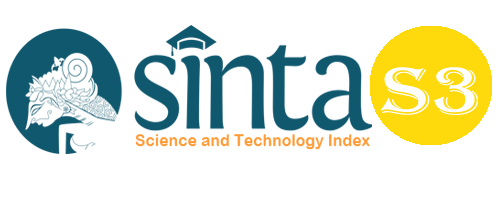Analysis of Employees of Outsourcing Companies Using SWAT (Subjective Workload Assessment Technique) and CVL (Cardiovascular Load) Methods
Abstract
A company certainly has an important role for employees in it, this role can determine the success or failure of a company. However, behind the important role of employees, there are also several obstacles, such as the workload of employees. Workload is the difference between a worker's abilities and job requirements. Someone will definitely feel a small, medium and large workload when carrying out activities in a company. Activities carried out by a person can be divided into two categories, namely physical activities and spiritual activities. These two things cannot be separated from each other, but can be distinguished by looking at the dominant activity. In conclusion, this study focuses on the workload experienced by employees of Outsourcing Companies. The purpose of this study is to analyze the workload of each employee at the Outsourcing Company and provide recommendations for corrective actions needed based on the measurement of workload, this study also uses two methods including the SWAT method and the CVL method. includes time 49.91%, effort 23.56%, and stress 26.56%, so that the dimension that has the greatest influence on the workload of employees is the dimension of time. Meanwhile, the CVL method revealed that the 15 employees who felt the highest workload were 31.304%. This research resulted in several suggestions for improvement, namely adding new employees and providing nutritious snacks for employees.
Keywords
Full Text:
PDFReferences
Iridiastadi, Hardianto and Yassierli. (2014). "Introduction to Ergonomics". Bandung: Rosda
Manuaba (2000). Ergonomics, health and safety. Surabaya: Former Widya.
Niati, D. R., Siregar, Z. M. E., & Prayoga, Y. (2021). The Effect of Training on Work Performance and Career Development: The Role of Motivation as Intervening Variable. Budapest International Research and Critics Institute (BIRCI-Journal): Humanities and Social Sciences, 4(2), 2385–2393. https://doi.org/10.33258/birci.v4i2.1940
PA & Meshkati, N. (1988). "Human Mental Workload." Elsevier BV Scientific Publishing House: Netherlands.
Reid, Garry B., Scoot S. Potter, Rein Bressler. (1989). “Subjective Workload Assessment Techniques (SWAT): Manual (U). Harry G. Human Systems Command- Wright Patterson Air Force Base, Ohio-USA.
Saputra, AD, et al., (2015). Analysis of the effect of flying time (time phase) on the mental load of the pilot using the Subjective Workload Assessment Technique (SWAT). The 17th FSTPT International Symposium at the University of Jember.
Shah, M. M., et al. (2020). The Development Impact of PT. Medco E & P Malaka on Economic Aspects in East Aceh Regency. Budapest International Research and Critics Institute-Journal (BIRCI-Journal) Volume 3, No 1, Page: 276-286.
Simanjuntak, Risma Adelina. (2010). “Analisis Pengaruh Diversi Terhadap Stres Mental Menggunakan Teknik Penilaian Beban Kerja Subjektif (SWAT)”. Majalah Teknologi 3.1: 53-60
Tarwaka (2015). Alat pengiris industri, ergonomi dasar, dan aplikasi tempat kerja. Surakarta: Penerbit Harapan.
Werdhiastutie, A. et al. (2020). Achievement Motivation as Antecedents of Quality Improvement of Organizational Human Resources. Budapest International Research and Critics Institute-Journal (BIRCI-Journal) Volume 3, No 2, Page: 747-752.
Widyanti, Ari; Johnson, Adi; Ward, Dick. (2010). Mengukur stres mental dalam pencarian tugas menggunakan Rating Scale Mental Effort Method (RSME). J@Ti (Teknik Industri). 5 (1): 1-6.
Wignjosoebroto, Sritomo dan Purnawan Zaini. (2007). "Praktek mempelajari ergonomi kognitif untuk penerapan prosedur stres mental pilot dan kontrol pesawat menggunakan metode SWAT". Laboratorium Desain dan Teknologi Sistem Kerja, Fakultas Teknik Industri. Surabaya: Institut Teknologi Nopember Sepuluh
DOI: https://doi.org/10.33258/birci.v5i3.6627
Article Metrics
Abstract view : 69 timesPDF - 34 times
Refbacks
- There are currently no refbacks.

This work is licensed under a Creative Commons Attribution-ShareAlike 4.0 International License.

This work is licensed under a Creative Commons Attribution-ShareAlike 4.0 International License.

_.gif)

















_.gif)



